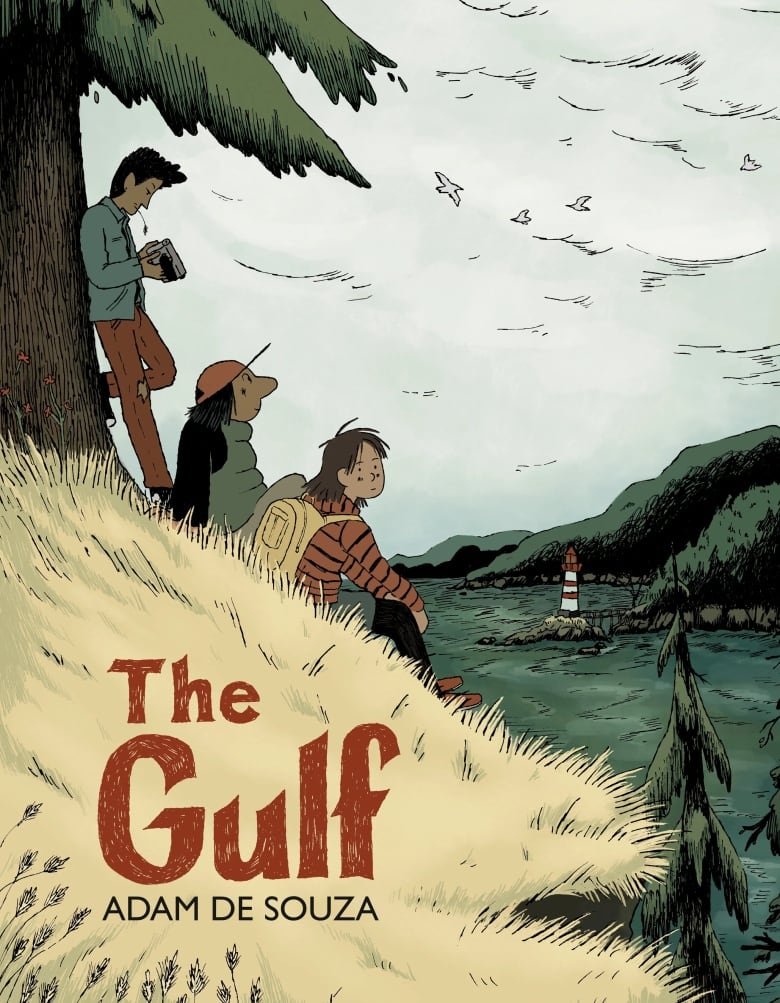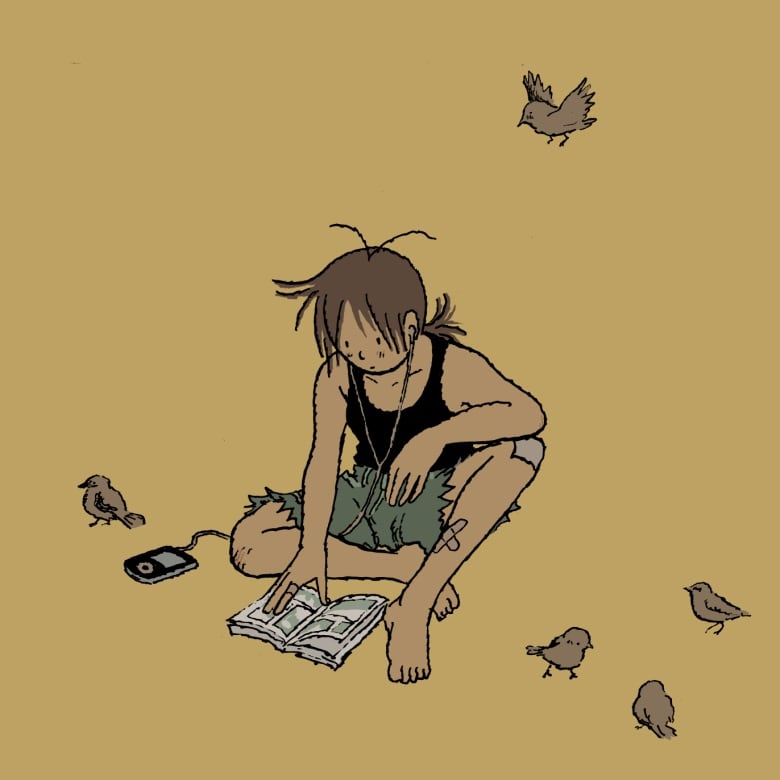
A remote island commune off the coast of Vancouver sets the scene for a coming-of-age graphic novel detailing a group of friends’ fear of adulthood and the enticement of running away from home.
The Gulf, written by Vancouver-based cartoonist and illustrator Adam De Souza, aims to capture the listlessness, restless energy and raw emotion of how it feels to be a teenager nearing the end of high school.
De Souza sat down with Margaret Gallagher, host of CBC Radio’s North by Northwest, to discuss the book before an event on Thursday at Lucky’s Books.
This interview has been edited for length and clarity.
North by Northwest13:30Adam de Souza on his new graphic novel, The Gulf
Award-winning cartoonist and illustrator Adam de Souza talks about his new graphic novel, The Gulf. It’s about a group of East Vancouver teens who run off to join an island commune.
What’s behind the title The Gulf?
It speaks to the geographic location of the book but also to the emotional place the characters find themselves between adolescence and adulthood.
They’re kind of stuck there, so I wanted to address that.
Why did you want to write about this time of life?
We put so much pressure on kids to make good decisions that will impact their whole lives. What you want to do with your life is such an enormous question, and I think it’s important to focus on what that actually means to a youth.
Tell me about the friends who are at the centre of the story. How much of you went into Milo, Alvin, Oli and Liam?
They’re a lot more out there than I was at that age. There’s a bit of me in each of them, but they’re much cooler and out there than I ever was. I remember feeling so strongly about how I wanted my life to be or how I thought things ought to be.
But writing a coming-of-age story that isn’t neat and tidy is reflective of the reality I had growing up.

For those who haven’t read it, can you describe the trajectory these kids are on?
They’re about to graduate from high school, and they decide not to enrol in university to go to a commune, which Oli, the lead character, found a pamphlet for on her parents’ shelf when she was young.
They’re pursuing this [utopian] vision of a world that makes more sense to them.
This commune is called the Evergreen. It’s on a Gulf Island. What inspired the Evergreen?
Whenever I visited the Gulf Islands growing up, I was always struck by how wild they felt. It’s a place where the human is de-centred, which is what I like a lot about Vancouver itself. I’ve always found it easier to imagine other ways of doing things there.
Such a little thrill to encounter The Gulf at my favourite store <a href=”https://twitter.com/pfbvan?ref_src=twsrc%5Etfw”>@pfbvan</a> <a href=”https://t.co/oeQX80yvby”>pic.twitter.com/oeQX80yvby</a>
—@Kumerish
What is it about the Gulf Islands that speaks to you?
It is that remoteness, wildness and beauty of it all. It is really inspiring.
Writing about a commune on the island is also about me, as a city dweller, and my vision of what life could be like if I were to pack it all up and buy a cabin on the island.
Why did you choose to set the book in 2007?
I could write about that time well, because I was 13 or 14. Writing about a specific time allows you to reflect on what was happening. To me, 2007 was the tail end of the Bush years, and Obama was right around the corner.
So, writing about someone like me who grew up in that “War on Terror” era and has a memory of the Twin Towers falling informs how she feels politically, which is that she feels lost.

You also capture some of the folly of that youth. They make assumptions about adults, but you do this without judgment. How do you hold both the adult and the youth perspectives in balance?
It’s important for me, as a writer, to write them with kindness so I understand they’re coming from somewhere, even if they’re reprehensible or terrible. A lot of the feelings in The Gulf, that Oli is feeling, are things that I felt.
I remember being in Grade 11 and being told to choose a career, apply to the university I wanted to attend, and have this whole plan. When you’re forced to think about it, it’s scary.
You’re an award-winning illustrator and cartoonist. How did you end up choosing this path?
Through a lot of idleness. I was in a band in high school. After high school, there was nothing I wanted to do in university.
I’d always drawn growing up. It’s the only way I can spend my time and actively enjoy it.
How does the story of The Gulf lend itself to a graphic novel?
It’s a lot more focused than my other storytelling. I came from doing a lot of zines and alternative comics, which allows you to be a lot less focused and a lot more vague.
But writing a book with an editor allows you to sit down and think of every moment and ask yourself why it’s happening. It’s a lot more precise and a lot easier to get into.
Do you think you’ll return to these characters? I want to know how their lives turn out.
A few people have asked me that. Since finishing the book, I have wondered, “Where is she now? Is she just working in a coffee shop? Is she still living on the island?”
I don’t have an idea for it, but I would love to figure that out for myself and see if there’s a story.